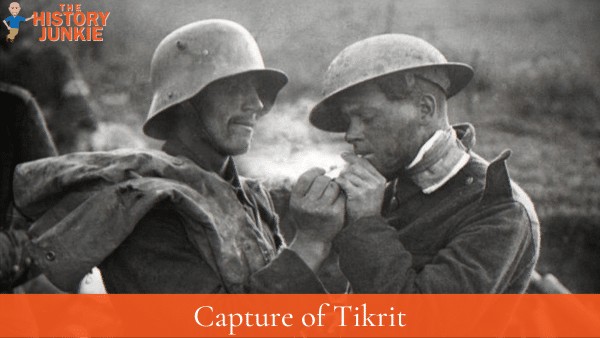The Capture of Tikrit was the final notable action presided over by British Commander-in-Chief Sir Frederick Stanley Maude.

Maude died of cholera on November 18, 1917, rather than as a result of poisoning, as many believed. The capture of Tikrit was also one of the final significant engagements fought on the Mesopotamian Front.
The Battle of Tikrit took place in the wake of the British victory at the Battle of Ramadi in September 1917. British Commander-in-Chief Sir Frederick Stanley Maude ordered General Alexander Cobbe to lead two divisions up the Tigris River to attack newly established Turkish defensive positions 10 miles north of Samarrah.
However, before Cobbe could attack, Turkish commander Ismail Hakki Bey learned of the British advance and withdrew his forces to a position directly in front of the town of Tikrit.
The Turks dug heavily protected trenches in a ring on the west bank of the Tigris River, defending the town, which was built on cliffs over the river.
Cobbe nevertheless attacked Hakki's lines on November 5, 1917, after being reinforced by a division of cavalry. After three hours of fighting, the British successfully took the Turkish front line but suffered heavy losses in a charge on the Turkish second lines.
The Turks skillfully withdrew further upstream to Fathah Gorge. On November 6, Cobbe took possession of Tikrit but found it stripped of men and supplies.
Maude's sudden death twelve days later brought a halt to British operations, particularly those aimed at seizing control of the regional oilfields. His successor as Commander-in-Chief, Sir William Marshall, continued Maude's cautious offensive strategy.
However, Sir William Robertson, the Chief of the Imperial General Staff in London, took the opportunity to scale back operations on the Mesopotamian Front.
Robertson had felt unable to execute this policy while Maude was demonstrating continuing success in the region.
